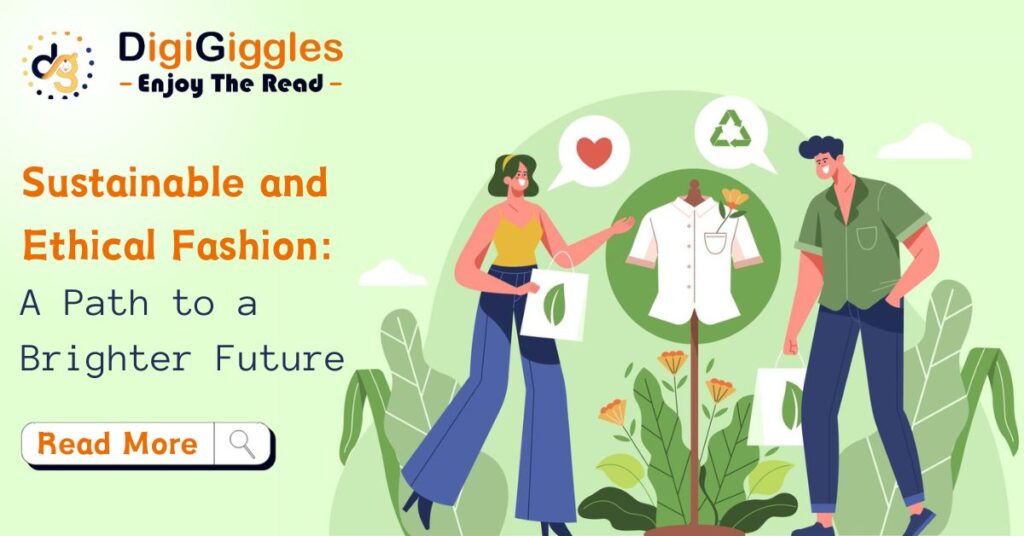
In a world increasingly focused on environmental and ethical concerns, the fashion industry has come under scrutiny for its impact on the planet and its often questionable labour practices. Sustainable and ethical fashion represents a significant shift in the industry, aiming to address these issues. In this blog, we will explore the key concepts and practices of sustainable and ethical fashion and why they are crucial for a more conscious and responsible future.
Sustainable Fashion: Protecting the Planet
In our everyday lives, we often ignore the impact our clothing has on the environment and human lives. Right from the production to its disposal, the various processes it undergoes leave some harmful remnants that harm the environment and ultimately us.
Sustainable fashion on the other hand aims to keep the environmental impact of the fashion industry to the minimum. The following are some important aspects of sustainable fashion:
1. Eco-Friendly Materials
Sustainable fashion prioritizes the use of eco-friendly materials, such as organic cotton, hemp, and Tencel. These materials are produced with minimal environmental impact, using fewer pesticides, reducing water usage and avoiding harmful chemicals.
2. Recycling and Upcycling
Recycling and upcycling are great ways to achieve sustainability. Recycling old/used clothing, reducing wastage and stabilizing demand for new goods can help. Even big brands are using recycled materials in their collections nowadays.
3. Slow Fashion
The fast fashion model, characterized by cheap, disposable clothing, is a significant contributor to environmental problems. Sustainable fashion embraces the “slow fashion” movement, encouraging quality over quantity and longer-lasting, timeless designs.
4. Responsible Production
Responsible brands set themselves apart by focusing on ethical manufacturing. This entails providing safe working conditions and fair wages to the workers and using more efficient processes and materials to reduce the overall carbon footprint.
5. Reduced Waste
Sustainable fashion aims to minimize waste at every stage of the fashion process, from design to manufacturing and consumer use. Brands focus on creating products that are durable and easily recyclable.
Ethical Fashion: Putting People First
Ethical fashion revolves around the treatment of workers, ensuring fair labour practices, safe working conditions, and fair wages. Key elements of ethical fashion involve
1. Fair Trade Practices
Ethical fashion brands often follow fair trade principles, ensuring that artisans and workers involved in production receive fair compensation and work in safe environments.
2. Transparency
Ethical fashion brands are transparent about their supply chains, revealing where and how their garments are produced. This transparency holds companies accountable for their practices.
3. Gender Equality and Inclusivity
Ethical fashion promotes gender equality and inclusivity in the workplace, striving to create equal opportunities for all, regardless of gender, race, or background.
4. Small-Scale Production
Some ethical fashion brands favor small-scale, artisanal production. This approach allows for personalized, quality craftsmanship and empowers local communities.
Why Sustainable and Ethical Fashion Matters
Environmental Impact: The fashion industry is one of the largest contributors to environmental issues, including water pollution, excessive waste, and carbon emissions. Sustainable practices can help mitigate these problems.
Human Rights: Labor exploitation and unsafe working conditions persist in many parts of the fashion industry. Ethical fashion seeks to ensure that no worker is subjected to inhumane treatment.
Consumer Awareness: As consumers become more conscious of the impact of their purchases, brands that embrace sustainability and ethics are becoming increasingly attractive.
Innovation: Sustainable fashion requires out-of-the-box thinking. This brings about innovative solutions like using eco-friendly materials and methods. Such innovations can bring about a positive change in the industry.
Long-Term Viability: Sustainable and ethical fashion is not just a trend; it’s a sustainable business model. Brands that prioritize these values often build strong customer loyalty and have long-term viability.
Challenges and Future Prospects
While the shift toward sustainable and ethical fashion is promising, the industry still faces several challenges:
Cost: Ethical and sustainable practices can increase production costs. Consumers must be willing to invest in quality, responsibly made garments.
Consumer Awareness: Creating awareness is the need of the hour as many consumers are still unaware of the issues in the fashion industry and the impact of their choices. Education to drive awareness is vital to bring about change.
Regulation: Stronger regulations and oversight are needed to enforce ethical and sustainable practices across the industry.
Supply Chain Complexity: Fashion supply chains are intricate, making it challenging to trace the origin of materials and labor practices.
Scaling Up: Ethical fashion faces the challenge of scaling up to meet growing demand while maintaining responsible practices.
Towards A Greener Future of Fashion
The fashion industry needs to chart a new path to sustainability, dumping wasteful practices in the process. It has to prioritize the health of its workers and ultimately, our planet. On the part of consumers, we have to make informed choices so that the producers pick up on the cues and alter their practices accordingly. The ball is in the court of the fashion industry. The consumers are already becoming aware. Hence, the fashion industry should showcase its commitment to a brighter, greener future with action and collaboration!